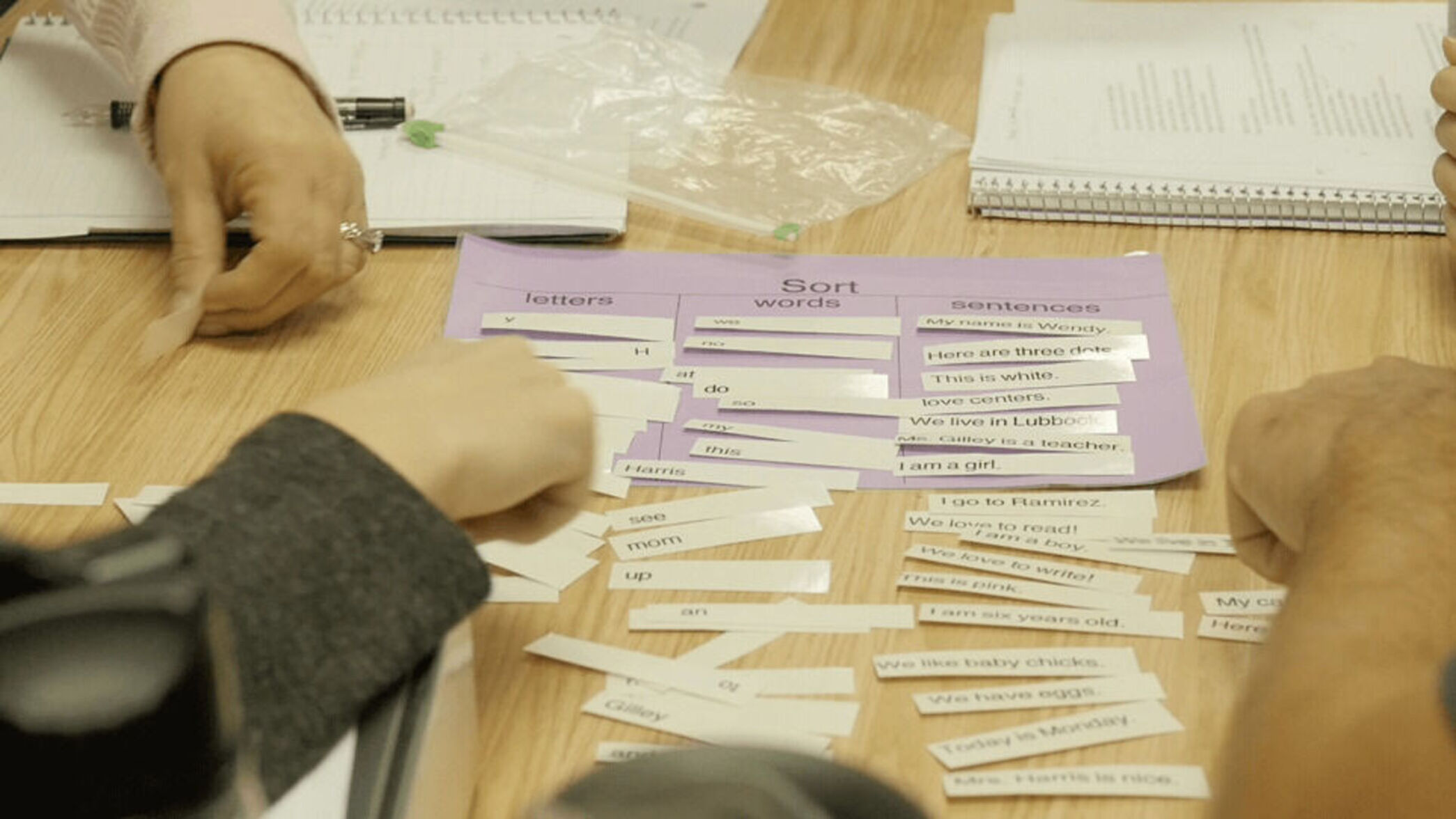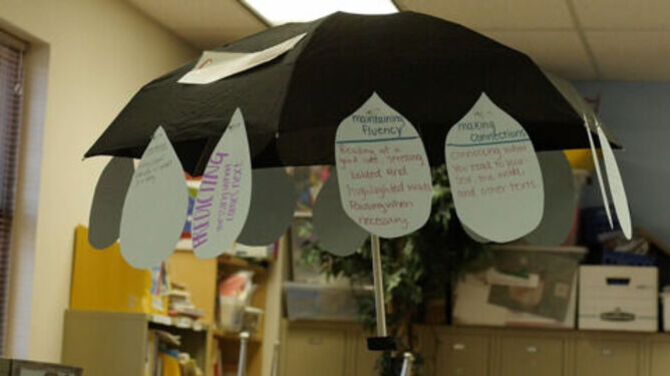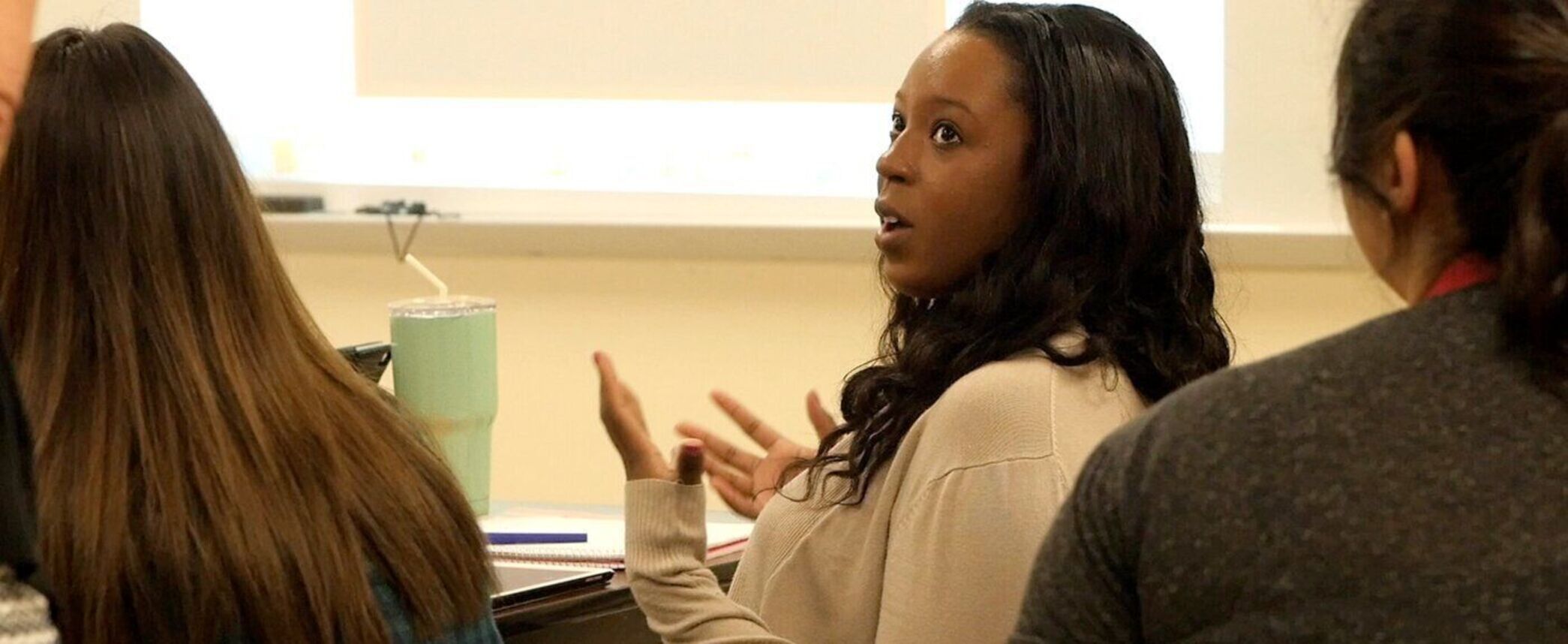Building Blocks: Modeling
Important teaching practices are modeled for teacher-candidates and broken down into component parts so teacher-candidates understand “why” they work.

Teacher-candidates receive specific, timely, and actionable feedback – based on a shared vision of effective teaching – across their experiences.
Effective feedback is essential to acquiring new knowledge and skills. But what makes some forms of feedback more useful than others? Three key features:
To be well prepared, teacher-candidates and novice teachers need to receive effective feedback on their practice.* But teacher-preparation programs cannot rely on effective feedback happening by chance. Programs must design opportunities and processes for it to occur.
*Learn more about the importance of feedback on pages 10-11 of Practice with Purpose and in Question #3 in The Science of Learning.
Across our 18 visits, we saw teacher-educators using a variety of innovative methods to provide effective feedback to their teacher-candidates. We start here by examining the approach used at Texas Tech University, and then explore the ways in which other programs are effectively (or not so effectively) providing feedback to aspiring teachers.

Texas Tech employs a clinically-intensive model of teacher preparation, called Tech Teach, which Dean Scott Ridley (a founding member of Deans for Impact) brought to the university in 2011. The model embeds teacher-candidates in local K-12 schools for half of their preparation experience. A Tech Teach “site coordinator” regularly observes candidates and plays a pivotal role in providing candidates with feedback. This happens primarily through something referred to as “PA,” for performance assessment.
*For more on the performance assessment process, and the expectations Tech sets for its teacher-candidates, read this.
There are three steps to the PA process. First, there is a pre-conference where the teacher-candidate previews a lesson for the site coordinator, who provides feedback on the lesson design. Together, they evaluate the flow of the lesson and anticipate how students might react and where they might struggle.

Listen to part of senior Megan Messerli and her instructor Alyson Mitchell's pre-conference:
On one visit, we listened to site coordinator Alyson Mitchell provide feedback to teacher-candidate Megan Messerli on how to clearly and concisely communicate instructions to students during a transition.
One important aspect of the pre-conference feedback session is that teacher-educators can offer feedback — before the teacher-candidate has delivered the lesson — on how to balance ambitious instructional activities with the reality of what will engage students.
After the pre-conference, a teacher-candidate will teach the PA lesson while being observed by their site coordinator and videotaping the lesson.
As you might imagine, this can make some teacher-candidates nervous. But rewinding and watching their “raw” teaching and receiving feedback from their site coordinators helps candidates understand how to improve for the next lesson. When candidates are teaching a lesson, their mental capacity is taken up by so many other things that they may not be monitoring their own performance.
See Question #1 in The Science of Learning for more on the role of cognitive load. Video review gives teacher-candidates a more realistic sense of what was happening in their classrooms.
Teacher-candidates discuss how performance assessments can be “terrifying” - but are also a powerful tool for improvement.
After delivering a PA lesson, the teacher-candidate meets with her site coordinator for a post-conference. Both parties separately score the lesson against eight criteria using a specific rubric that Texas Tech has adopted (more on this momentarily). They choose one area of reinforcement and one area of refinement, to allow the candidate to focus on honing a specific skill against a measurable goal, which motivates teacher-candidates to improve.
Candidates at Texas Tech welcome this feedback, at least once they get used to it. “Having this forced evaluation on you is a great opportunity that you might not necessarily see as great in the moment, because it feels like a lot,” said Courtney Foster, who graduated from Texas Tech in spring 2017. But “once you get results back, and you see that you’re improving, that you’re making progress, you just get this confidence in your teaching.”
Teacher-candidate Nyasia Brunson talks about her trajectory of improvement from her first performance assessment to her second.
It wasn’t always this way at Texas Tech. Denise Lara, a site coordinator, attended the program before the PA process was introduced. “The feedback that I got in my traditional student-teaching program was much more blanket feedback,” she told us. Her supervisor would tell her, “You’re doing great, this looks great, you’re a very effective teacher.” While Lara appreciated the praise, this sort of feedback was impossible to act upon — and she suspects her “effectiveness” was based on how engaged her students appeared, not what they were actually learning.
Things are different now.
Faculty from Texas Tech discuss the role that feedback plays in the program.
Maggie Faramchi, who finished the Tech Teach program in spring 2017, said that at the beginning of her student teaching, she knew the assessment of her teaching would evaluate how well she used higher-order questioning with her students — questions that require students to use some sort of analysis or reflection, such as, ‘What is the author’s point of view?’
Still, given how many moving parts every lesson has, she found it difficult to come up with those questions on the fly.
At Faramchi’s first PA, her site coordinator agreed that Faramchi should incorporate more higher-order questions. But instead of leaving Faramchi to figure out how to do that, the site coordinator suggested a specific strategy: She told Faramchi to think of questions in advance, write them on sticky notes, and then attach them to sections in the book she would read to the class. The note would serve two purposes: a visual reminder of when to ask the question, and a written-out plan for what to ask.
Faramchi found this to be a very useful strategy in her initial student-teaching experiences — and, over time, she progressed so that she now finds herself asking higher-order questions without the sticky-note strategy.
Current teacher-candidates such as Nyasia Brunson agree that they receive specific and actionable feedback. Brunson told us her first PA was “god awful.” Instead of opening her reading-comprehension lesson by modeling what she expected students to do and learn, she just stood and talked at the class of second graders.
In the post-conference, her site coordinator noted it helps students — especially early elementary students — when their teacher “thinks aloud” while modeling a task or activity. It’s not enough for a teacher to just do what she’s expecting students to do; she also needs to explain why she’s doing it. (See our Modeling Building Block for more on this.)
“I didn’t want to ask just a whole lot of recall questions, like ‘What did you see me do?’” Brunson said. “I also wanted to incorporate the why: ‘Well, why does this step come before this step? ‘What do you think would happen if I disregarded this step, or if I did it in a different order?’”
Brunson said it didn’t feel natural at first to incorporate these think-aloud questions, and putting this technique into practice was challenging. She had to think through which steps to emphasize for her students, and which to incorporate into another step — because the longer the list, the more likely her students would become disengaged or overwhelmed. Eventually, it clicked.






Our visit to Texas Tech highlighted one important challenge that teacher-preparation programs face — namely, how to employ a common language of practice while still fostering ambitious instruction.
On the one hand, the use of a common observation rubric (the TAP rubric) within Tech Teach ensures that teacher-candidates receive consistent feedback across the program. Teacher-candidates are introduced to this rubric in their very first course and use it as a framework to connect the lessons and strategies they learn throughout the program. As a result, they develop and can discuss specific instructional skills (or “teacher moves”) that help minimize the cognitive load of teaching — with all teacher-educators using the same language to support them.
This is worth celebrating. As we discuss in the Alignment Building Block, it’s challenging for professors, clinical faculty, cooperating teachers, and teacher-candidates to develop a shared language of practice. Texas Tech demonstrates that it can be done — and we think the teacher-candidates there receive a consistent preparation experience as a result.
At the same time, we believe programs need to think carefully about the content of the common language they adopt. Rigor matters too. Consider: We observed one teacher-candidate at Texas Tech lead an efficient civics lesson and demonstrate excellent classroom management. But to our eyes, the content of the teacher-candidate’s lesson was mostly surface level, and many opportunities were missed to generate and elicit deeper student thinking. We therefore encourage programs to consider carefully what languages of practice they want to adopt — the CLASS observational framework and TeachingWorks’ high-leverage practices are both worthy possibilities.
Coordinating when and how feedback is provided from multiple teacher-educators — faculty, mentor teachers, fieldwork instructors — is another challenge. At multiple programs, teacher-candidates told us they received contradictory feedback from instructors in these three groups, and often had no chance to reconcile the conflicts.
Teacher-candidates at another program complained of receiving feedback in very different formats, leading to uneven quality. And programs need to demonstrate their commitment to providing effective feedback through their actions. At one program we visited, teacher-candidates told us they had to submit a 10-minute video of a lesson they’d taught. Several teacher-candidates told us they received no feedback whatsoever on their teaching from their university instructor.
This is simply unacceptable.

The performance-assessment process at Texas Tech is only one of many forms of feedback we observed during our 18 visits. We found a handful of programs using effective feedback strategies consistent with learning-science principles.
For example, the teacher-preparation program at the University of North Carolina-Charlotte is thinking about how to provide specific and immediate feedback to candidates. To do this, they are equipping teacher-educators with strategies such as “silent signals,” whereby a teacher-educator can gesture to a teacher-candidate during a lesson to prompt them to do something differently: If the teacher-candidate has been lecturing for too long, the teacher-educator might give the signal to prompt a “turn and talk” moment. Teacher-educators are also being trained on how to provide “whisper coaching” to teacher-candidates during pauses or downtime within a lesson.
Another important question is how to frame feedback to teacher-candidates in ways that will ensure they will internalize it. The Relay Graduate School of Education uses specific sentence stems that teacher-educators employ to cue teacher-candidates that feedback is forthcoming. (Sample: “It was effective when…” and “next time try…”)
It’s also important for program leaders to think about what they should stop doing when they provide feedback. Multiple programs we visited provided comprehensive feedback to teacher-candidates across multiple dimensions of their teaching, including one program that scores teacher-candidates on 18 different domains at once. We admire the ambition, but fear for cognitive overload — better to focus feedback on more specific and targeted areas.

There is no “silver bullet” approach to providing effective feedback to teacher-candidates and novice teachers. But as Texas Tech and other programs illustrate, there are specific principles that should guide leaders of teacher-preparation programs who want to transform the way their programs provide feedback to candidates.
Leaders who want to do this might begin by asking:
Important teaching practices are modeled for teacher-candidates and broken down into component parts so teacher-candidates understand “why” they work.
Teacher-candidates receive specific, timely, and actionable feedback – based on a shared vision of effective teaching – across their experiences.
Teacher-candidates receive specific, timely, and actionable feedback – based on a shared vision of effective teaching – across their experiences.
Programs carefully design the trajectory of preparation to create a coherent experience for every teacher-candidate they prepare.
Sign up for our newsletter and follow us on social media to get the latest news.